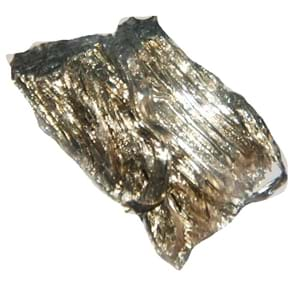
Samarium(Sm) is the one of lanthanide rare earth metals with atomic number 62. Samarium is bright, fairly hard, silvery white metal. Samarium is stable at room temperature, but samarium ignites in air at 150oC or higher temperatures. Usually samarium assumes to be mostly at +3 oxidation state. Samarium is slightly toxic, but it has no significant biological role. Samarium was discovered in 1853 in Geneva, Switzerland, by Swiss chemist Jean Charles Galissard de Marignac. However, samarium was firstly isolated in 1879 by French chemist Paul Emile Lecoq de Boisbaudran from mineral called samarskite, the mineral which named after soviet after Colonel Samarskii. Samarium’s hardness and density are similar to zinc’s and has paramagnetic property at room temperature. Samarium is 40th most abundant element in Earth’s crust and 5th most abundant lanthanide with average concentration 8ppm. Samarium is not found free in nature. It’s found, like other rare earth metals, in mineral containing it like monazite, bastnasite, cerite, gadolinite, and samarskite. Commercially, samarium is recovered from minerals using ion exchange and solvent extraction techniques. In addition, samarium metal could be produced of the molten samarium chloride with sodium chloride.
Applications of Samarium:
Samarium-cobalt magnets are much more powerful than iron-cobalt magnets and are used in microwave applications due to its ability to remain its magnetic properties at high temperature.
Samarium is used in headphones and stereos because samarium-cobalt magnets enabled the miniaturization of electronic devices.
Samarium is used to dope calcium chloride crystals for use in optical lasers.
Samarium is used in infrared absorbing glass.
Samarium is used as neutron absorber in nuclear reactors.
Samarium is used in specialized use in glass and ceramics as samarium oxide compound.
Samarium is used in carbon arc lighting for studio lighting and projection.
Samarium oxide used as catalyst in the dehydration and dehydrogenation of ethanol.
Samarium is used in small motors and pickups for some electric guitars as samarium-cobalt magnet.
Samarium, the radioactive Sm-153, is used in treatments of cancer.
Comments
Post a Comment